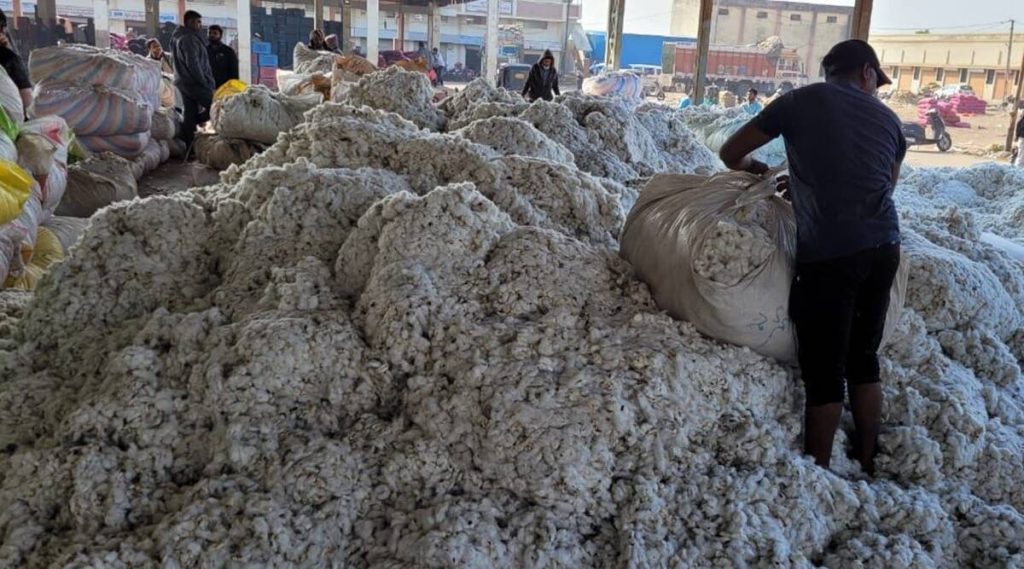Prices of seed cotton reached a new peak of rs 10,000 per quintal on thursday in the yard of an Agricultural Produce Market Committee (APMC) mandi in Jamnagar. According to traders, the natural fiber’s prices are skyrocketing this season due to a significant drop in production.
The price of kapas in Jamnagar mandi remained unchanged on Thursday, ranging from Rs 7500 to Rs 10,555, with the modal price (the price at which the majority of a commodity is sold on a given day) being Rs 10,000. “This is a historic price, and it is the highest in the state.” Last year, the highest bid was Rs 6,825; this year, farmers are getting an average of Rs 3,000 more,” said Hitesh Patel, secretary of the Jamnagar APMC.
The price of around Rs 9,500 is almost double as compared to last year’s average price of around Rs 5,500.
Cotton traders blamed the phenomenon on a sharp drop in cotton yields, a negligible carry-forward stock from the previous year in India, and an empty pipeline in the domestic cotton ginning and spinning industry.
“Cotton arrivals in APMCs are nearly half as high as in normal years, despite high demand from the domestic ginning and spinning industry, which has an empty raw material pipeline due to almost no carry-forward stock from the previous year.” December-January is the peak of the cotton marketing season, and Jamnagar APMC typically receives around 2,000 quintals per day. However, it is no longer around 1,000 quintals,” said Mahipatsinh Jadeja of Rajeshwari Trading, a cotton trading firm in Jamnagar APMC. This year’s arrivals, according to Secretary Patel, are low.

Similar is the case in Rajkot and Gondal. Rajkot APMC recorded arrivals of 3,450 quintals Thursday. On December 31 last year, cotton arrivals in Rajkot APMC were recorded at 5,400 quintals but the price was in the range of Rs 4,860 to Rs 5,705. In Gondal, arrivals on Thursday were 1,951 quintals, which secretary Tarun Panchani said, was almost half as compared to corresponding period of the previous years.
“On the one hand, arrivals are low and on the other, prices of cotton seeds have remained steady at around Rs 3,750 per quintal and that of de-oiled cotton cake (DOC) at around Rs 1,800 per bag (of 50 kg). Despite high prices, overseas demand for cotton candy (ginned cotton) and cotton yarn has remained good. All these factors are propelling kapas prices to new levels in APMCs,” Prabhudas Jasani, a cotton trader in Rajkot APMC said.
Cotton seeds are crushed to extract oil which is used as cooking oil and DOC which is generated as byproduct during crushing is a premium cattle-feed concentrate in Gujarat.
Farmers said unfavourable weather and attack by pink bollworms have kept the yield drastically low. “I have been able to harvest only 200 mann (40 quintal) kapas from my 40 bigha (6.25 bigha make a hectare) plantation this year and I am expecting only one more picking. The average yield, which remains around 20 mann per bigha, will drop to 10 mann this year as it rained excessively towards the fag-end of monsoon in September. Then came pink bollworm attack. On top of this, due to unfavourable weather, the cotton bolls are not opening up these days and therefore there is nothing to harvest,” said Amit Garala, a farmer from the Charakhadi village in Gondal taluka of Rajkot.
Gujarat is India’s largest cotton producer, accounting for nearly one-fourth of total cotton production. Cotton acreage in the state, however, fell to 22.53 lakh hectares (lh) in the Kharif season 2021-22, down from 22.78 lh the previous season and an average of 25.53 lh over the previous three years.
According to the state government’s First Advanced Estimate, cotton production in Gujarat will be 80.95 lakh bales (each containing 170 kg of seed-cotton), which is in line with the previous year. “However, this estimate will be proven incorrect this year because yields in the first and second pickings have been low,” Garala said.



